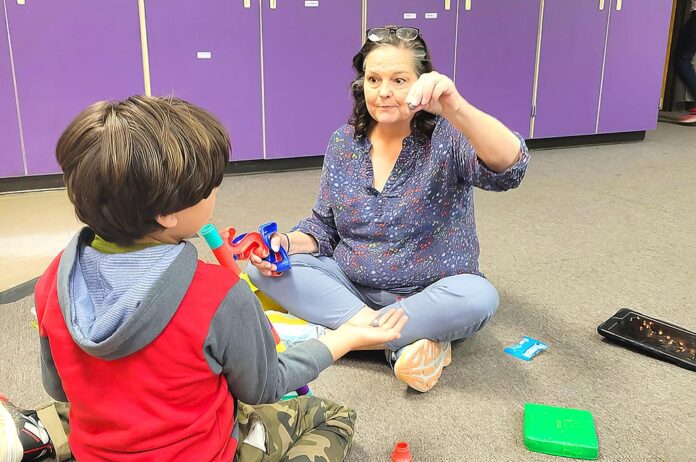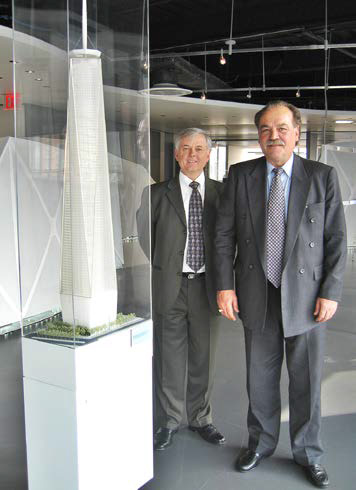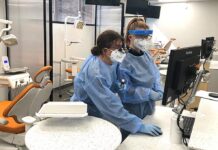
For the first time ever, autism is the top category in the special education population of the Tigard/Tualatin school district, overtaking learning disabilities as the number one need. In the 2022/2023 school year, there were 60 more students with Autism Spectrum Disorder (ASD) than the previous year.
“It’s a remarkable increase; significant,” says Carol Kinch, Director of Student Services with TTSD. “Usually, you’re about the same every year, so that was a shocker.”
It’s a statistic made even more remarkable considering that district-wide, student enrollment has dropped sharply. Since the pandemic, enrollment is down by about 1100 students.
So, with a higher percentage of autistic students than ever before, it begs the question: Why is TTSD Student Services eliminating the position of Autism Specialist?
Beginning in fall 2023, TTSD will no longer have on-staff autism specialists. Instead, each elementary school will have a special education team anchored by two learning specialists who will be trained to serve all disabilities, including autism (formerly, learning specialists and their teams did serve students with autism, but with the support of an autism specialist). TTSD has hired new staff, including psychologists and speech and language pathologists (SLPs), to augment the special education teams.
The impetus for this change began in the fall of 2022, when the surge in students with autism put a strain on the existing resources. Schools were struggling to meet the needs of students with challenging behaviors.
According to Kinch, teachers, support staff and even principals were feeling stressed by the unexpected surge in students needing special programming, and by the high turnover of staff. “We had drifted in our programming for students with autism, “says Kinch, “And if a student doesn’t have all the proper supports in place, they’re going to communicate with their behavior.”
When asked why the district was eliminating the position of autism specialist when there is such a significant surge in ASD, Kinch answered, “Because we can meet the needs that we have in our schools without the autism specialist role. We’re going to build capacity through training to make sure that every school has people who can build programs for students with autism, instead of waiting for someone to come to their school to do it.”
Both Kinch and TTSD Superintendent Dr. Sue Reike-Smith feel the current model, where the autism specialist travels from school to school, is not adequately meeting the needs of students.
“The requirement for the district is to ensure that every student who walks through our doors is given a full day of school, not just an instructional day, but the bell-to-bell experience, “says Dr. Reike-Smith. “To be able to do that, you have to have highly trained individuals work with those students directly rather than spreading themselves across multiple buildings.”
At the beginning of the 2022/2023 school year, there were two autism specialists; each specialist served five or six elementary schools. Their roles included supporting each school’s special ed team, training and coaching staff, helping to develop Individual Education Plans (IEPs), leading evaluations, working with parents, setting up structured work systems and creating personalized learning materials for students. One of those positions was eliminated as of December 2023; the remaining autism specialist, Val Valo, served TTSD in that role for 20 years. Her position was eliminated at the end of this (2022-2023) school year.
In the new model, evaluations will be conducted by school psychologists and SLPs. To augment their ability to support students with autism, learning specialists and their assistants will participate in a variety of training, including 2-day sessions featuring the STAR program (Strategies for Teaching based on Autism Research). The STAR program, a curriculum that uses applied behavior analysis (ABA) techniques, is not without controversy; while some elements of the STAR program work beautifully for most children on the spectrum of autism, not all do.
“There’s a truism that says,’ Once you meet one autistic person, you’ve met one autistic person,’” says Tobi Rates, Executive Director of the Autism Society of Oregon. “Every autistic person is different; there is no one-size-fits-all. The STAR program is not going to work for every child with autism.”
Some staff have expressed concerns about the additional workload the new model places on the school psychologists, who have already had the duties of school counselor added to their workload several years ago. And, though psychologists are highly educated and highly trained, not all have been specifically trained in differential diagnosis between ASD and other disabilities. Emotional behavior disabilities and ADHD can (and often do) mimic autism spectrum disorder (ASD).
Greg Brown is the parent of an autistic child who attends an elementary school in TTSD, and has come to rely on his child’s special ed team and the expertise of the autism specialist, especially when creating the student’s IEP.
“There was one goal identified for my child, to increase peer interactions, with other students and also with teacher,” says Greg. “Having Val at these meetings allowed the team to really tap into her expertise, and to provide additional supports to make school a bit easier. She was always quick to offer examples, tools and guidance. It’s important to remember that this diagnosis is a spectrum. And so what works for my kid might not necessarily work for somebody else with the same on-paper diagnosis. I always loved that the goals felt like they were tailored to my child, because the autism specialist knew my child.”
One special ed staffer, who asked to remain anonymous, said this about the elimination of the autism specialist position: “I’m concerned about losing a valuable resource with such a high level of experience and depth of knowledge, and also about our ability to adequately fill that gap with staff who already have myriad things to do. We are consistently asked to do more with less.”
Kinch responds, “We’re actually adding support, not taking away support. In this model, the students are actually getting more than what they have been getting.”
Time will tell if the new “building capacity” model, with more on-site special ed staff, but without specifically trained autism specialists, will provide the support autistic students need. But the question has been raised multiple times: in building capacity by hiring more staff, why not add autism specialists, rather than eliminate them?
“If you asked me how to build capacity in education,” said a former staffer who prefers to remain anonymous, “my answer is, and has always been, the same: find the best person who has the skills you need. Then, have that person work with people who want to be trained and share the vision. This way, you spread the wealth of knowledge and expertise, and the kids benefit.”
Outgoing Autism Specialist Valo says, “I love the idea of building capacity; it’s so important to make sure the teams get the training they need. “I would have loved to have been a part of the process.”


















